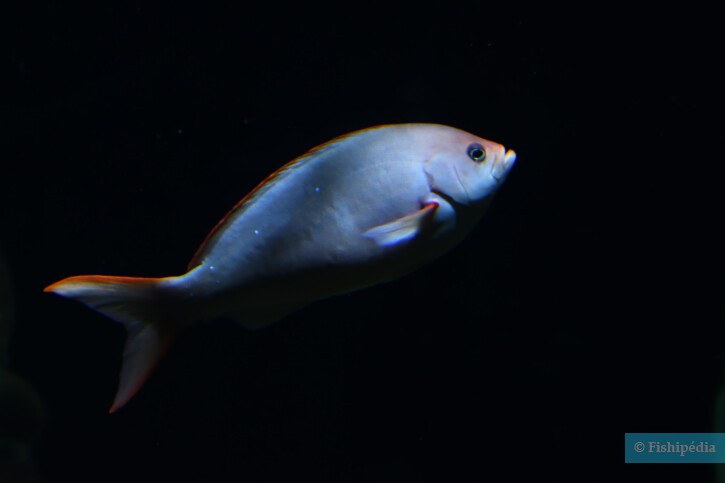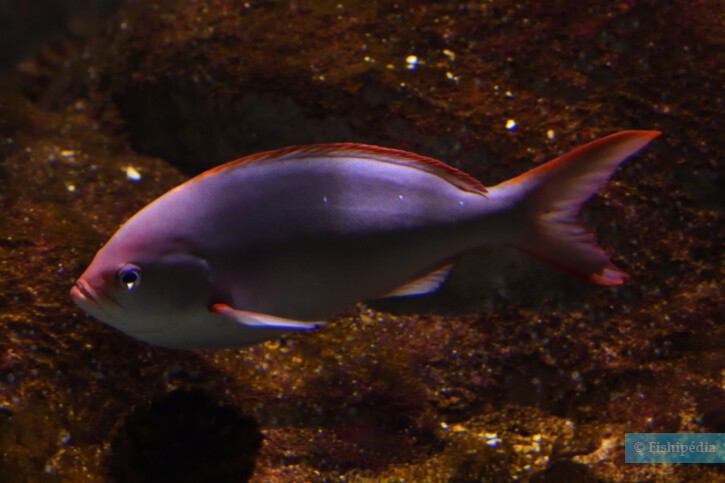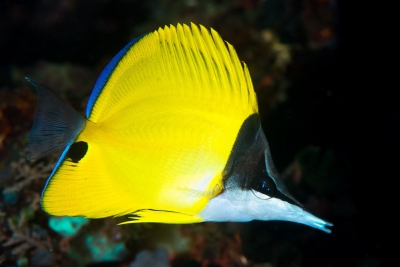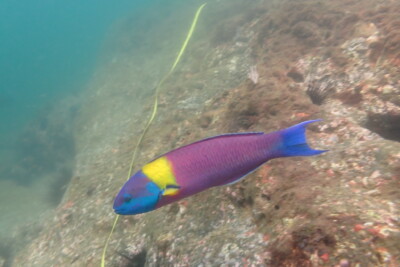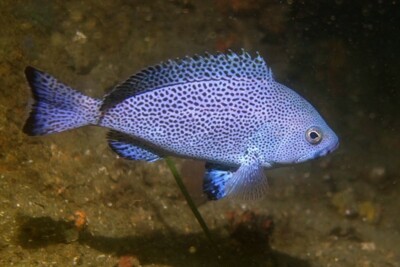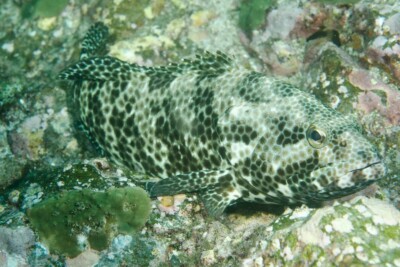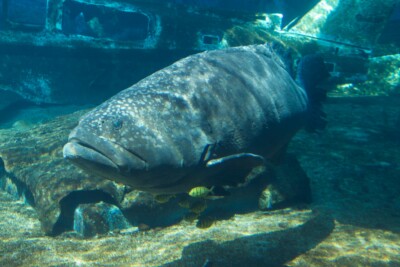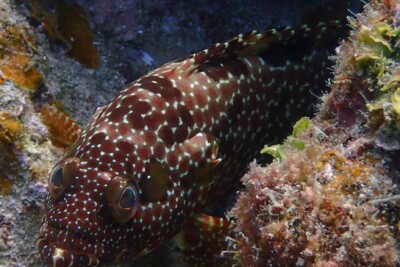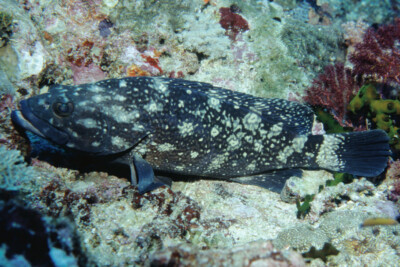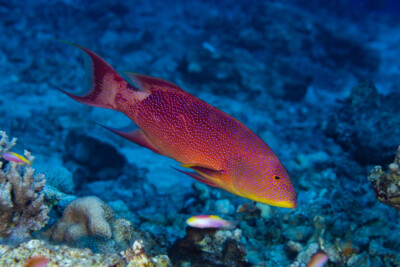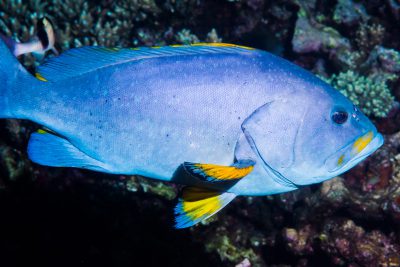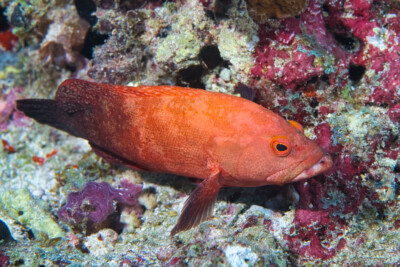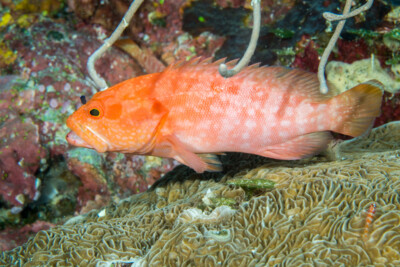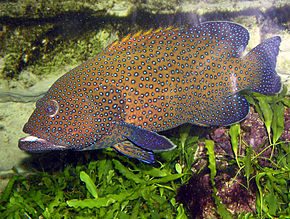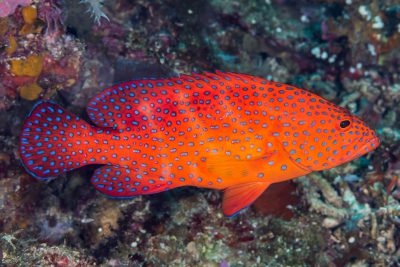pacific creolefish
| Family | Epinephelidae |
|---|---|
| Genus | Cephalopholis |
| IUCN category (World) | LC |
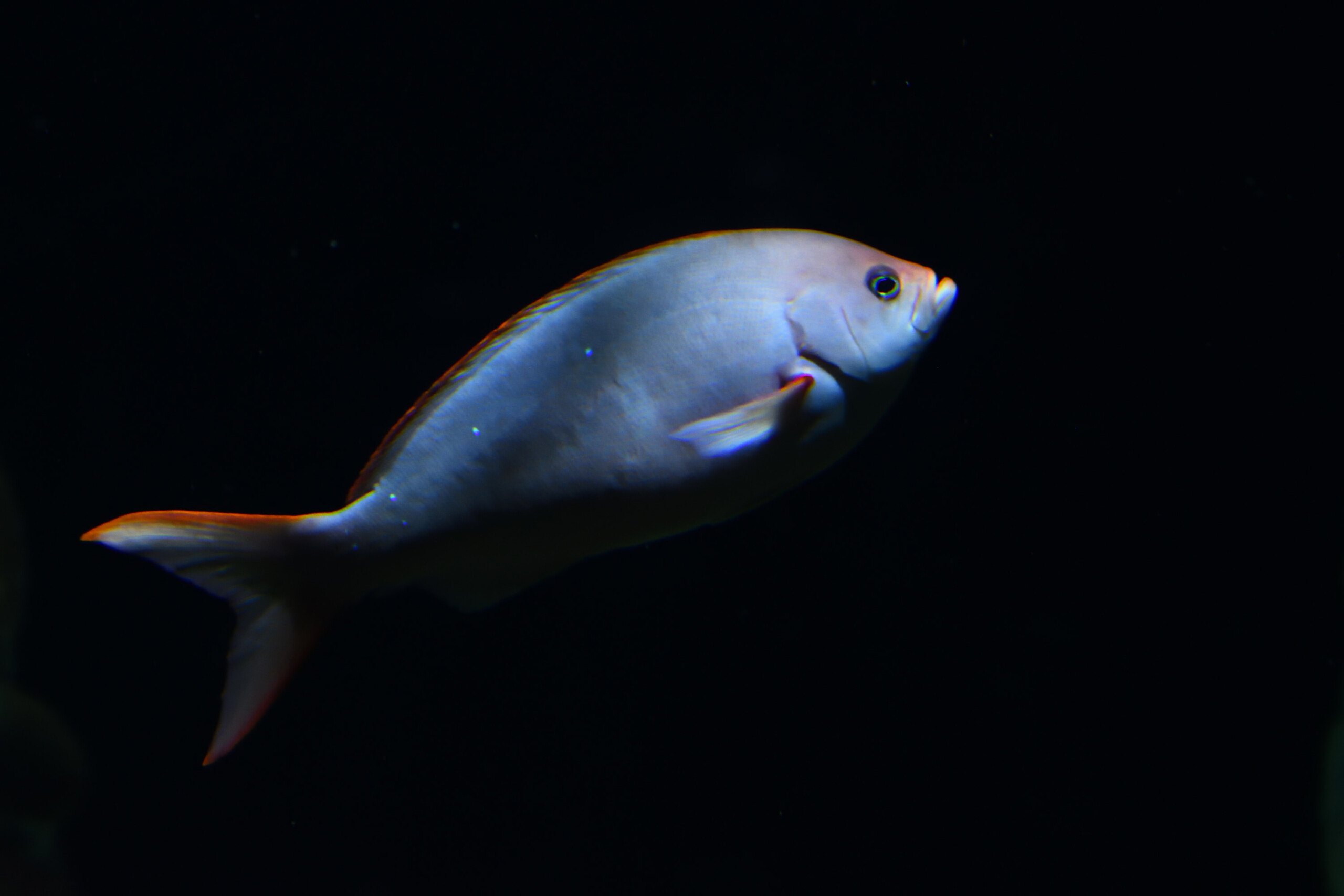

Introduction
Cephalopholis colonus is a species of fish encountered in the eastern Pacific, from the Gulf of California to Peru, including the Galápagos Islands, Clipperton, Cocos, and Malpelo.
This species forms schools ranging from the surface to a depth of 120 m in coral and rocky reefs and primarily feeds on plankton in the water column above the reefs. During spawning, several hundred to several thousand individuals gather near the reefs and seamounts.
Who is it?
Morphology
-
Average size30 cm
-
Maximum size35 cm
-
Patterntasks
-
Average size30 cm
-
Maximum size35 cm
-
Patterntasks
How to recognize This fish ?
The body is reddish or grayish with 2 to 3 bright blue or violet spots on the dorsal part and 2 more on the mid-lateral part of the caudal peduncle. The axillary region of the pectoral fins also has a bright blue spot.
The base of the dorsal fin is darker, the edge of the fin is greenish-red. The species has a shortened snout that enables close-range binocular vision, allowing it to feed mainly on small planktonic animals.
Sexual dimorphism
The adult male is larger than the female.
Behaviour & Life cycle
-
dietcarnivorous
-
Sociabilityliving in small groups
-
territorialYes
-
Way of livingdiurnal
The Pacific creolefish is a fish that lives in small groups naturally among rocks. Members of each group organize themselves around a well-established hierarchy. It is a carnivorous species with a rather calm temperament. This species is territorial and dislikes the presence of intruders nearby, especially animals with similar behavior. It can also be aggressive towards conspecifics. However, the Pacific creolefish pays little attention to non-territorial animals.
Reproduction
-
Reproductionovipare qui pond en eau libre
The Pacific creolefish is found in small groups high above the reef, but seeks refuge in the reef when danger approaches. These fish feed on small planktonic animals.
Risks for humans
-
VenomousNo
Origin and distribution
What is its habitat?
Natural environment characteristics
-
Temperature18 - 29 °C
-
Depth10 - 70 m
Biotope presentation
The Pacific creolefish is most often found at depths between 10m and 70m. However, it is not impossible to find this species at other depths.
Species of the same biotope
To go further
Sources & Contributions
Participation & Validation
The Fishipedia team and specialist contributors are committed to providing high-quality content. However, although the information comes from scientific sources or testimonials from specialists, the cards may contain inaccuracies.

Benoit Chartrer
Translation
Translation done with the valuable contribution of our translators, who make this information available to a wider audience. We sincerely thank them for their commitment.

Marine Kassel
Scientific partners
Tags
Species of the same family
Same genus
Species of the same biotope
